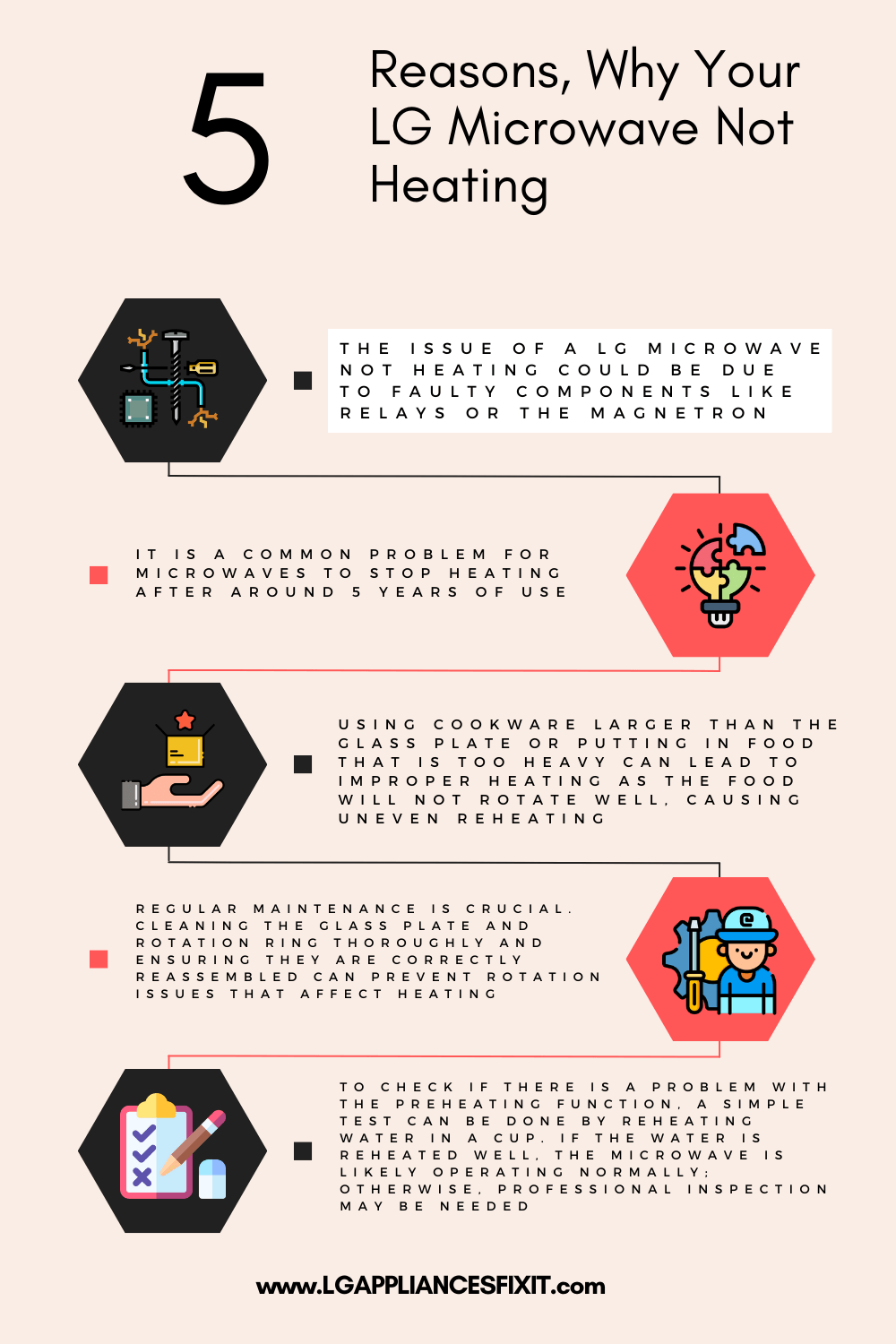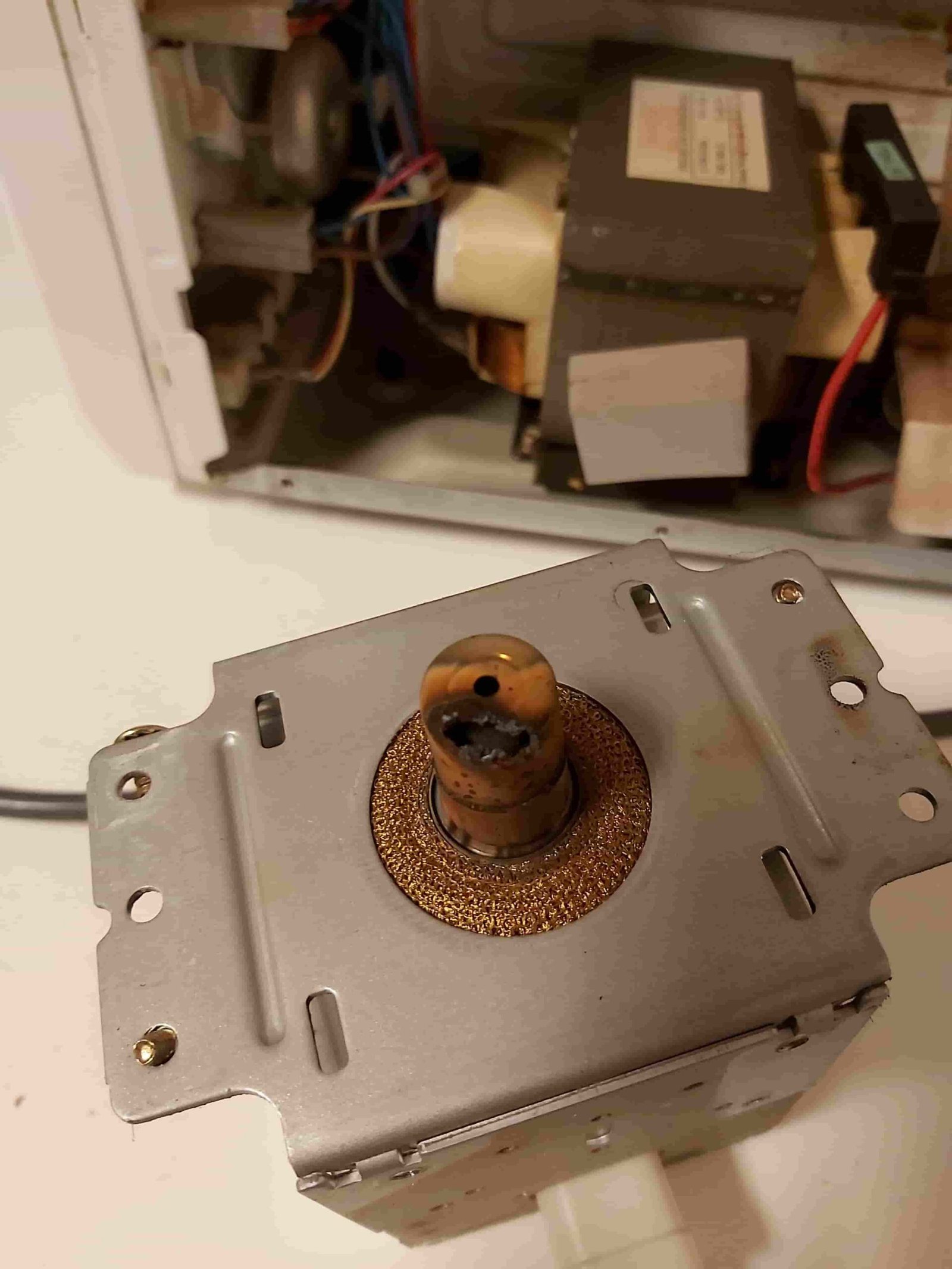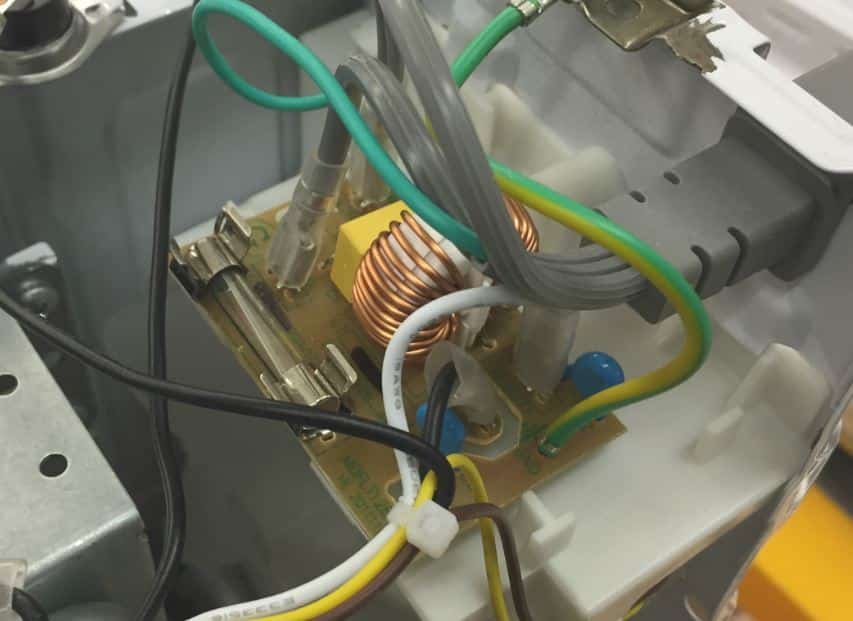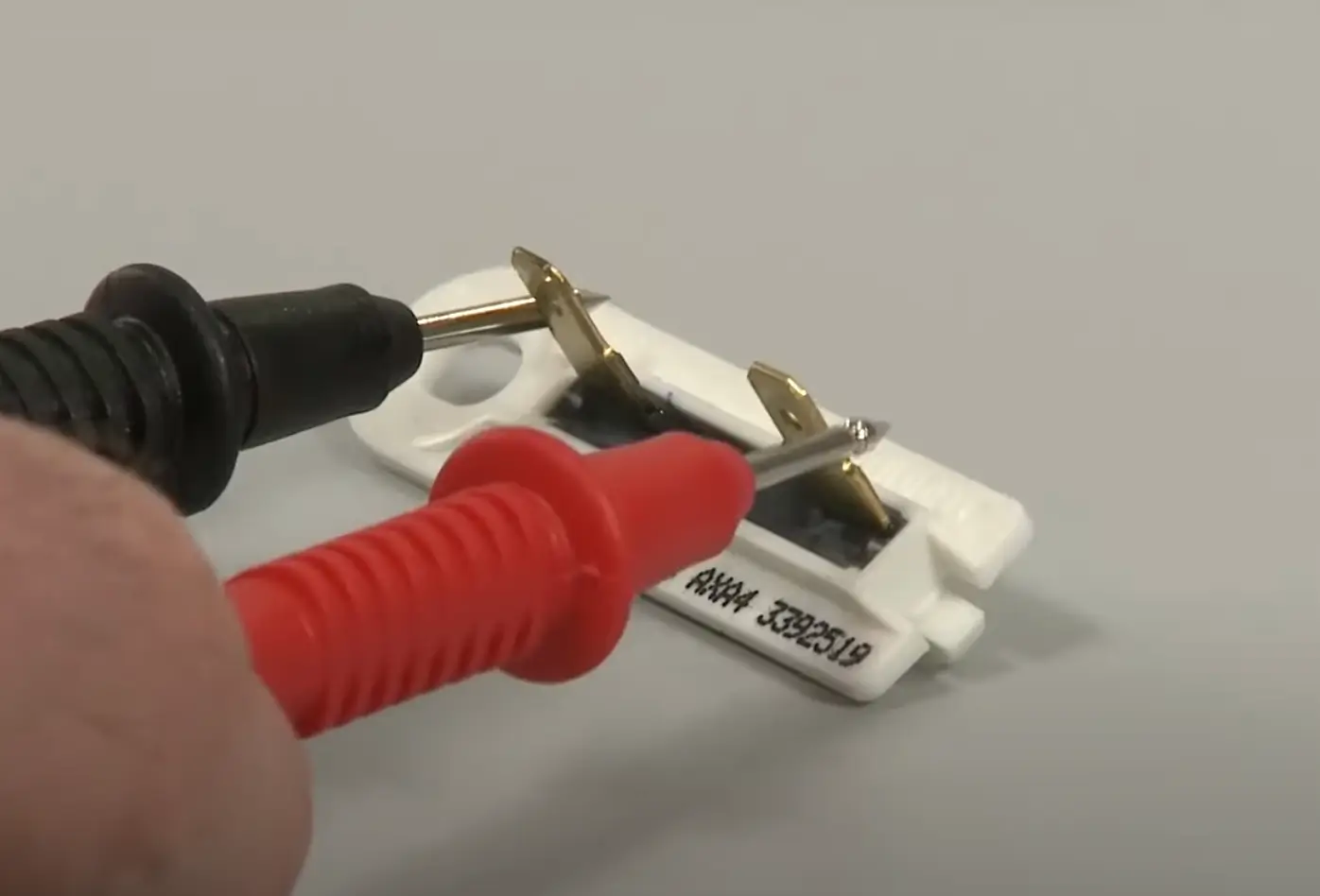Ever had that frustrating moment when your LG microwave won’t heat the food properly? You’re not alone! There could be a few reasons why this is happening, but don’t worry – we’ve got some tips to help you troubleshoot and get your microwave back to its heating glory.
It’s a common frustration when appliances don’t perform as expected. If your LG microwave isn’t heating your food properly, there are several potential issues you can investigate and potentially resolve on your own.
Common Reasons: Why is My LG Microwave Not Heating?
If your LG microwave isn’t heating up, there could be a few common reasons behind this issue. Let’s dive into some possible causes and solutions:

Check the Power Supply
One of the first things to do is to ensure that your microwave is getting DC power. Check if it’s plugged in properly and that the outlet is working. Sometimes a simple power issue can cause heating problems.
Faulty Magnetron

The magnetron is the component responsible for generating microwave energy. If it’s defective, your microwave won’t heat properly. Consider replacing the magnetron to restore heating functionality.
When your microwave does its magic, a little diode plays a big role. It takes the wiggly A/C power from the transformer and turns it into straight-shooting D/C power, boosting the voltage up to around 5,000 volts.
This supercharged power the magnetron, the part that zaps your food to deliciousness. But here’s the kicker: if that trusty diode calls it quits and burns out, the magnetron won’t get the juice it needs, leaving your microwave powerless to heat your meals.
Malfunctioning Diode
A burned-out diode can also lead to heating issues in your microwave. Replacing the diode might be necessary to get your appliance back to heating food effectively.
If something looks busted or old, it’s time for a swap! Get yourself a new part that fits from a store that sells appliance parts.
Blown Thermal Fuse

The thermal fuse is a safety feature that can blow if there’s a high current or overheating. If this happens, your microwave oven won’t heat. Replacing the thermal fuse could solve the problem.
Door Switch Problems
Issues with the microwave door switch can prevent the microwave from heating. Make sure the door closes properly and the switches are functioning correctly.
High Voltage Components
Components like the high-voltage capacitor or transformer can also cause heating problems if they’re defective. Inspect these parts for any signs of malfunction. Capacitors in microwave ovens store energy in the form of a charge, with capacitance values typically ranging from 0.7 to 1.5 microfarads in voltage doubler circuits.
How To Fix an LG Microwave Not Heating? Step-by-Step Guide
Before delving into the troubleshooting steps, let’s take a look at a survey conducted among LG microwave users to understand the prevalence of heating issues and common experiences:
Question: Have you ever experienced your LG microwave not heating properly?
Results:
- According to LG USA support data, 65% of respondents have encountered heating issues with their LG microwaves.
- 20% reported the issue was resolved by simple troubleshooting.
- 45% required professional repair services to fix the problem.
- 10% had to replace their microwave oven due to irreparable heating issues.
Troubleshooting Steps to Fix an LG Microwave Not Heating
Now that we understand the potential causes, let’s move on to the troubleshooting steps to fix an LG microwave that is not heating:
Check Power Supply
Ensure the microwave is plugged in and receiving power. Test the outlet with another device to rule out power supply issues. Unplug the unit for 30 seconds and plug it back in. Does the control panel respond now?
Reset the Microwave Oven
Sometimes, a simple reset can resolve minor issues. Unplug the microwave oven for a few minutes and then plug it back in.
Inspect the Magnetron
If you are comfortable with electronics, you can test the magnetron for continuity using a multimeter. Replace it if it is faulty, or consider contacting appliance repair services.
Test the Diode and Capacitor
Similarly, check the diode and capacitor for continuity and replace them if necessary. Set the meter to R-times-10K and calibrate it, then place the meter leads across each side of the diode without touching them with your fingers to avoid false readings.
Check the Door Switch
Make sure the door switch is functioning correctly. If not, replace it to allow the microwave oven to heat.
Inspect the Fuse

Check the fuse for any signs of damage or burning. Replace it if needed or consult with a microwave repair technician.
When the issue is fixed, to ensure your microwave working properly, double-check that the outlet it’s plugged into is in good shape.
Why does my microwave have power but not start?
When your microwave won’t start, it could be due to various reasons specific to the brand, whether it’s GE, Samsung, LG, KitchenAid, Maytag, or Whirlpool.
One common issue might be with the interlock switches, which prevent the microwave from starting if the door is open.
If these switches fail, the microwave’s safety mechanism kicks in, preventing it from heating your food.
The display panel could still show power level, cooking times and power, but the appliance won’t commence operation.
Another potential issue is with the thermal fuse or thermostat, components that protect your microwave by shutting it down if it overheats.
If the thermal fuse has blown, it interrupts the electrical path to the microwave’s heating element, effectively disabling it.
Similarly, a malfunctioning sensor can fail to detect the correct temperature, thereby halting operations to prevent damage or an electric shock, due to the potential for a lethal amount of electricity running through this kitchen appliance.
Moreover, faults within the microwave’s control board can result in a non-starting issue. The control board acts as the brain of the microwave, orchestrating all actions from detecting when the door is securely shut to adjusting cooking times and power based on your selections.
When it fails, the entire system can go haywire. To troubleshoot these complex issues, referring to your manual or the brand’s related help library on their site could help you address the problem.
For instance, checking the LG site or Maytag customer service portals (Contact no. 1-800-344-1274) might provide you with specific instructions or diagnostic tools.
How do I know if my magnetron is working?
To determine if your magnetron is working, you can look for several visual symptoms that indicate a problem.
These symptoms include a loud hum, no heat, arcing sound, electrical burner smell, weak or no heat, magnetron getting extremely hot (overheats), intermittent arcing or “snapping” sound, burnt or melted antenna cap, loose magnetron terminals, discoloured or burned connectors, or small blackened pits on the filament connections.
If you notice any of these symptoms, it may be necessary to replace the magnetron. I took out the magnetron and ran the microwave without it. Turns out, the clicking sound is coming from what I’d call the mainboard, not the switchboard or circuit board.
FAQs
What should I do if my microwave door doesn’t close properly?
If your microwave door isn’t closing properly, it might be due to a misalignment or damage to the door latch. Inspecting the door seal and latch for any obstruction or damage is a good first step. Minor issues can sometimes be resolved by cleaning the seal and latch area, but if the problem persists, you might need to contact a technician for further microwave repair.
Can I handle microwave repair on my own?
Handling microwave repair depends on the complexity of the issue. Simple tasks like replacing the light bulb or cleaning can be done easily. However, if the issue involves the capacitor, control board, or replacing the magnetron, it’s safer to seek help from a related help library or a professional technician due to the risk of electrical shock and the complex nature of these components.
Why isn’t my microwave oven heating?
If your microwave oven isn’t heating, there are several potential causes. The most common include a failed magnetron, issues with the control board, or a malfunctioning diode. The diode is burned out or the magnetron might need to be replaced. DIY repair experience is helpful, but due to the risks and complexities, contacting a technician might be your best bet.
How do I know if I need to replace the magnetron in my microwave?
The magnetron is crucial for heating in microwaves. Signs that it might need to be replaced include the microwave if it overheats frequently or stops heating entirely. Unfortunately, diagnosing and replacing the magnetron requires professional repair experience, as working with high-voltage components can be dangerous.
What does it mean if my microwave’s display shows error codes?
When your microwave’s display shows error codes, it’s indicating a specific fault within the system. Referencing your microwave’s manual or a related help library online can interpret these codes. Common issues include problems with the door not closing properly, overheating, or failures in the heating element. Sometimes resetting the circuit breaker can clear the error, but persistent issues require professional attention.
Can a faulty microwave cause other appliances, like my dishwasher, to malfunction?
Typically, a microwave should not disrupt the function of other kitchen appliances like a dishwasher, Samsung, KitchenAid, Maytag, or a Whirlpool appliance, unless there is an underlying issue with your home’s electrical circuit, such as a tripped circuit breaker. If you notice multiple appliances experiencing issues, checking the breaker and ensuring no circuits are overloaded is a good step before assuming the microwave is the cause.
Is it better to repair my microwave or buy a new one?
Deciding whether to repair or buy a new microwave depends on several factors, including the age of your microwave, the cost of repairs, and the severity of the issue. Minor repairs like replacing the control board or the thermostat can extend the life of your microwave economically. However, if your microwave is old and requires major repairs, like replacing the heating element or transformer, it might be more cost-effective to buy a new one.
What are the risks of DIY microwave repair?
DIY microwave repair carries several risks, especially when it involves internal components like the capacitor, and transformer, or if you need to replace the thermal fuse. These components can retain a high voltage charge, even when the microwave is unplugged, posing a risk of electrical shock. Without the proper tools and repair experience, it’s safer to consult a professional technician for assistance.